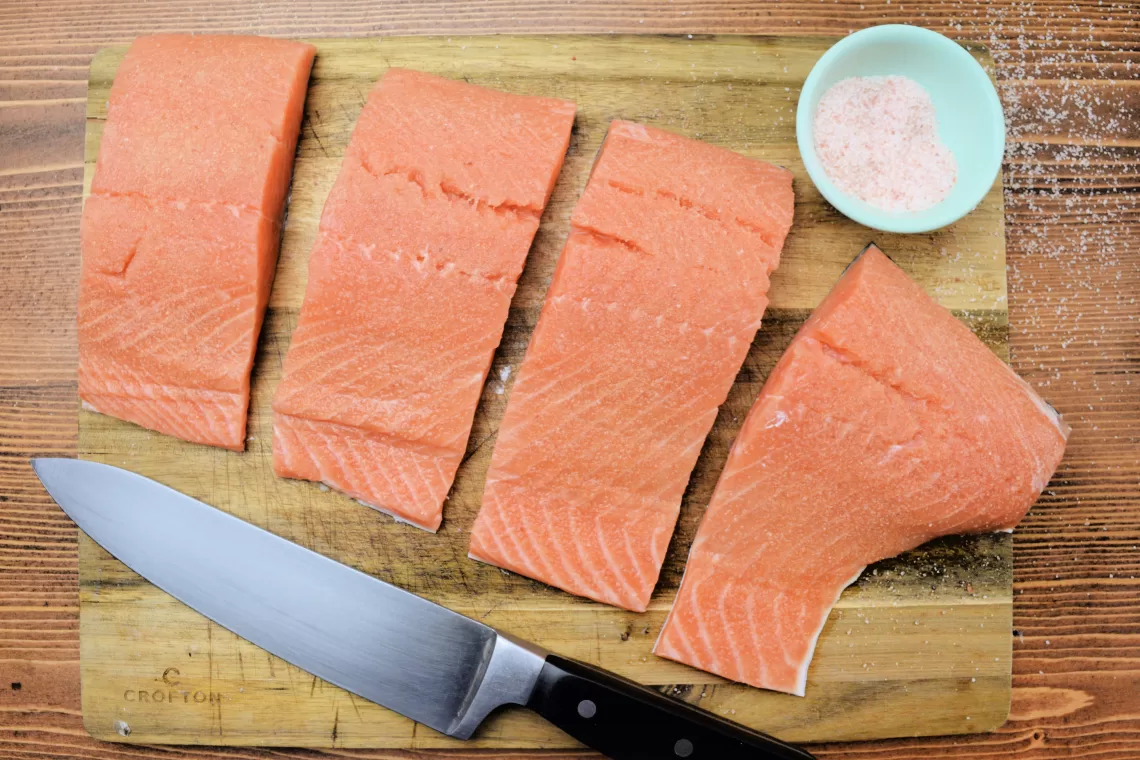
How To Oven Cook Seared Salmon In A Cast Iron Skillet
There is nothing better than a salmon filet properly seared on the flesh side. When a cast iron skillet is used to achieve this, the golden crisp crust that is formed is to die for! No need to drown them in heavy sauces and seasonings to enhance the flavors, these babies require the bare minimum. A bit of onion powder, garlic powder, and sea salt is really all you need. The most important part is knowing how to use the cast iron skillet correctly in order to achieve this perfection without burning it or disintegrating your fish! Let’s be honest, cooking salmon can be a very tricky thing!
This post contains affiliate links, which means I make a small commission at no extra cost to you. See my full disclosure here.
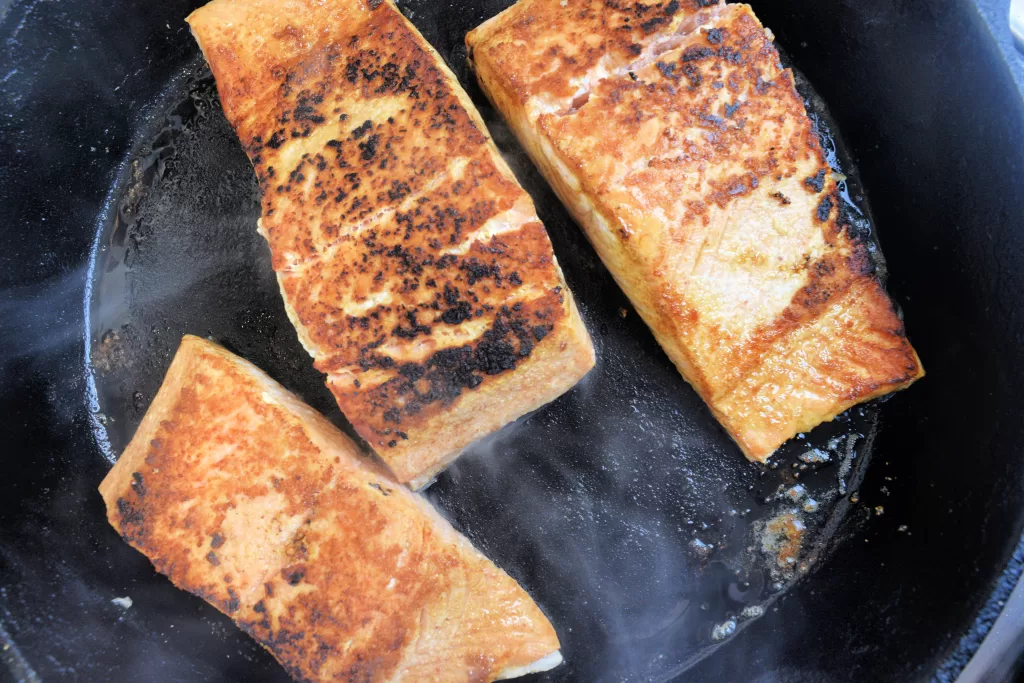
Why I Prefer A Cast Iron Skillet
We’ve tried multiple ways of cooking salmon, from baking to broiling, to searing in stainless steel and enamel pans. But hands down, nothing compares to cooking with a cast iron skillet. It is the best pan for the job! This cooking method is the best way, and it’s the only way I believe it should be cooked. I’ve been fortunate to dine at some pretty high end restaurants and every time I leave the restaurant I ALWAYS think about how much better it is at home, and of course, how I could’ve fed my whole family on the cost of an 8 ounces salmon filet from that restaurant. The cast iron skillet does the best job toasting the top of the fish which causes the crust to form and it is amazing! You really can’t get that result any other way.
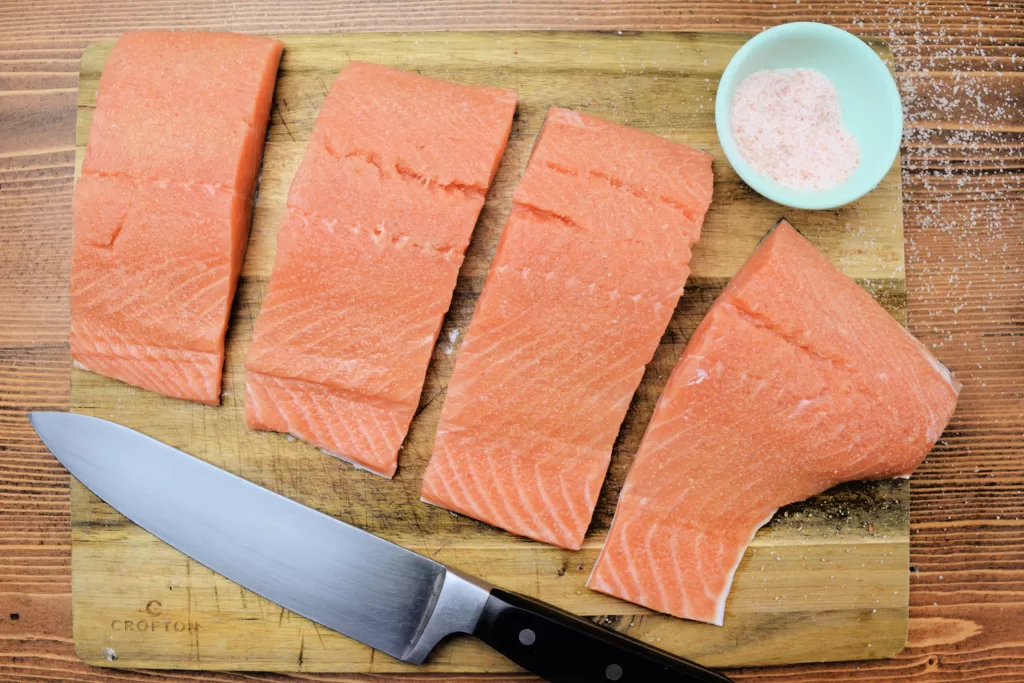
Tips Using Cast Iron Skillets
It’s important to know that cast iron is very porous, so washing it with soap is not ideal. In most cases, you just wipe them down after using them. I usually rinse it with extremely hot water and use a plastic dough scraper (found here) to scrape off anything that may have stuck to it, then wipe it down and dry it thoroughly. If you do wash it with soap, then you’ll need to re-season your pan by slathering on an oil with a high smoke point such as coconut oil or avocado oil, and then placing it in a preheated 450 degrees F. oven for 30 minutes. I would refrain from using a low smoking point oil such as extra virgin olive oil. You can repeat this step a couple times to achieve the desired seasoning. This will help keep your food from sticking. I also find that making sure the cast iron pan is hot prior to adding the fat to it, then adding the food, really helps keep things from sticking, and I only have to wipe it down with a paper towel to clean up. This is the same with scrambled eggs! Cast iron is usually our go to cooking pan. You can find the one I use here.

The Chef
This salmon recipe is not mine. It was perfected by my husband, Theron, a few years ago and it is still one of our go to weeknight dinners–it’s that good! And it’s also an excellent way to get those omega-3 fatty acids in. This great recipe works with any type of salmon: atlantic salmon which is usually farmed, or wild salmon such as sockeye salmon.
Ingredients:
6-8oz Skin-on Salmon filet (brought to room temperature)
Salt to taste
Onion Powder
Garlic powder
1 TBSP butter
Fresh cracked Black or white pepper if desired
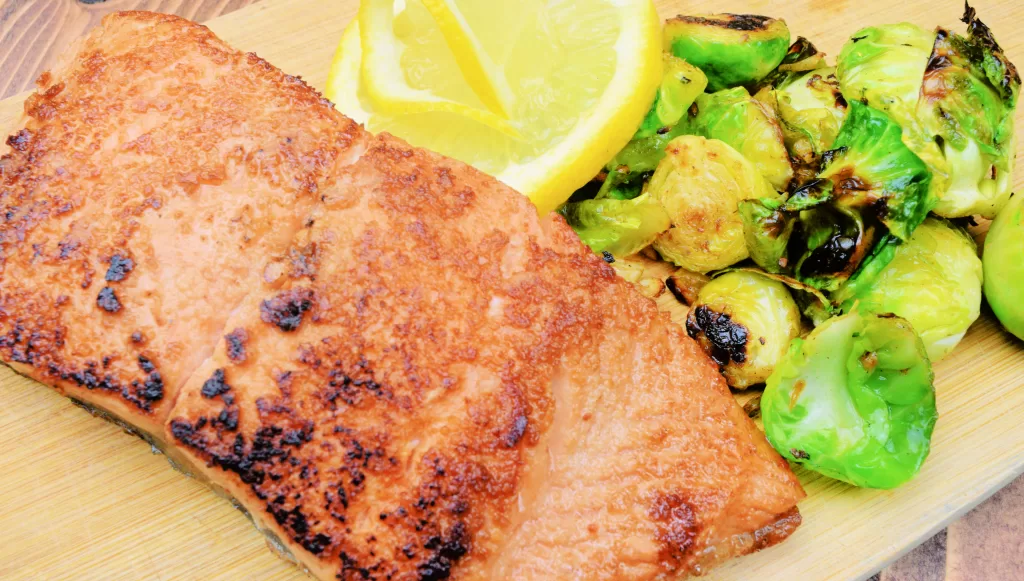
How To Sear Salmon In A Cast Iron Skillet
Preheat Oven on the broil setting.
Heat your seasoned cast-iron skillet on medium-high heat.
Rinse and blot dry your salmon filets with a paper towel.
With flesh side up, sprinkle on salt, onion powder, garlic powder, and pepper if using.
Once the pan is heated, place butter in the pan. If butter is burning, then your pan is too hot and will need to be reduced to medium heat. The high temperature will cook your salmon way too fast and cause the crust to burn. Also, do not crowd the pan as this will cause your salmon to steam.
Place salmon flesh side down on the hot pan for 3 minutes.
After 3 minutes, use a fish spatula to flip the salmon skin side down and cook for another 3 minutes.
Once the last 3 minutes are up, place the cast iron skillet, with the salmon still on it, into the oven to broil for 2 minutes. Depending on the thickness of the salmon, you may need to cook it for a couple of minutes more.
Check it periodically as fish tends to over cook fast!
Cook until the desired internal temperature is reached.
Rare Salmon: Less than 120 degrees F, Medium Salmon: 135 -140 degrees F.
Remove from the hot skillet, plate, and if desired squeeze a little lemon juice on it or place a lemon wedge on top of the salmon and serve.
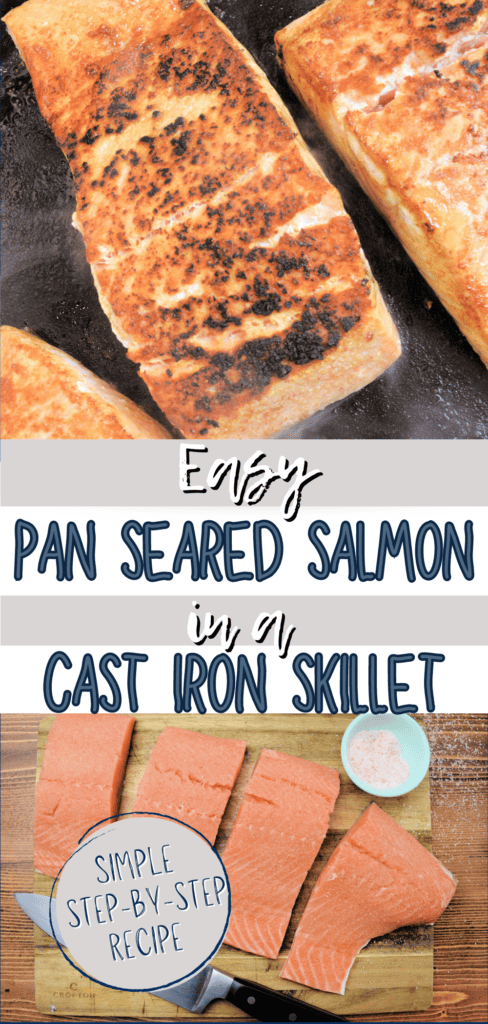
How I Like My Salmon
My husband usually will cook our fish to an internal temperature of 125 degrees F., only because it will continue cooking and an over cooked fish is not worth posting about! I tend to like mine on the rare side. Store the leftovers in an airtight container for up to 3 days in a refrigerator. I hope this cast iron salmon goes down as one of your family’s go to easy meals!
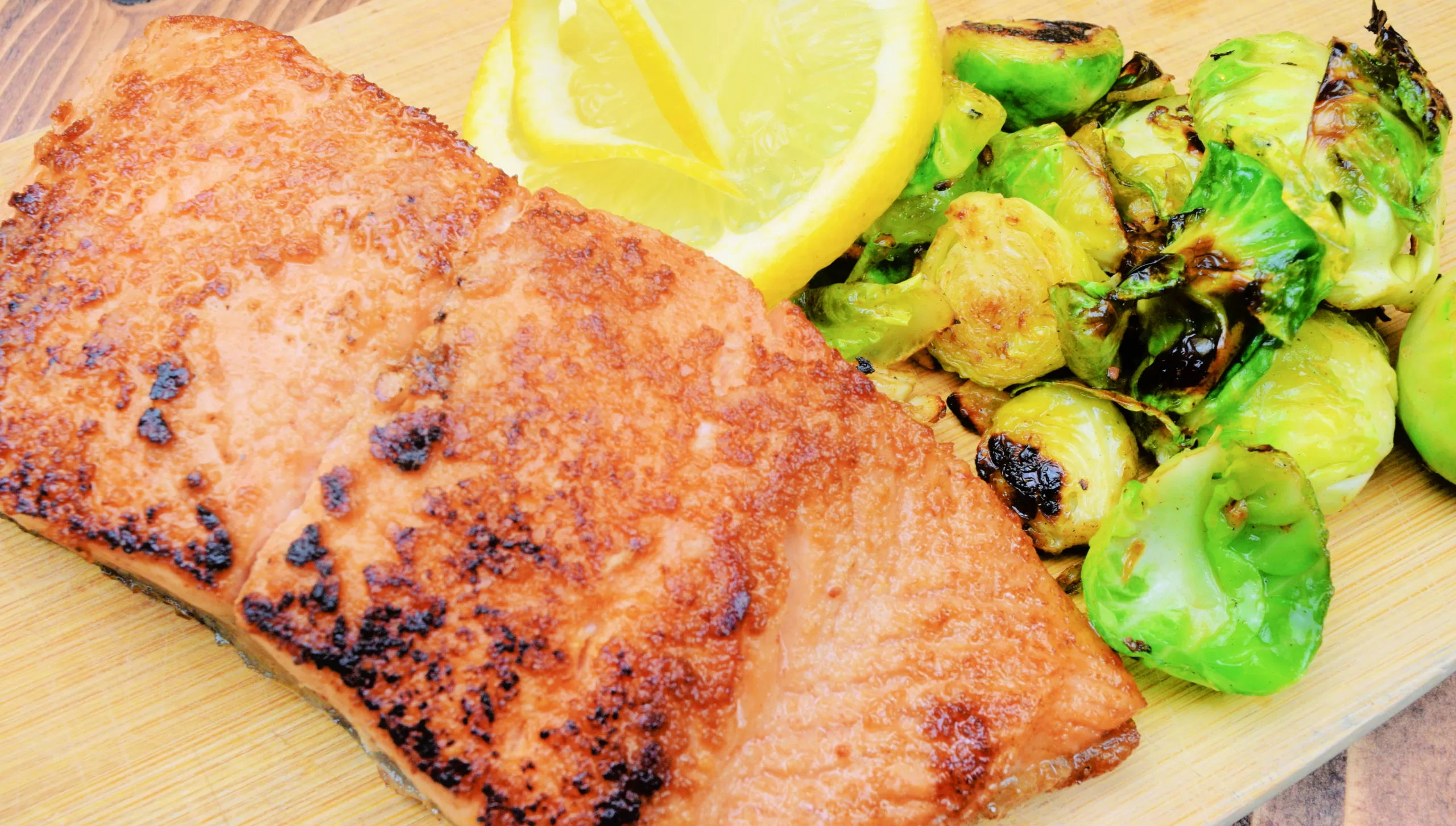
Seared Salmon In A Cast Iron Skillet
Ingredients
- 6-8 oz Skin-on Salmon filet brought to room temperature
- Salt to taste
- Onion Powder
- Garlic powder
- 1 TBSP butter
- Fresh cracked Black or white pepper if desired
Instructions
- Preheat Oven on the broil setting. Heat your seasoned cast-iron skillet on medium-high heat. Rinse and blot dry your salmon filets with a paper towel. With flesh side up, sprinkle on salt, onion powder, garlic powder, and pepper if using. Once the pan is heated, place butter in the pan. If butter is burning, then your pan is too hot and will need to be reduced to medium heat. The high temperature will cook your salmon way too fast and cause the crust to burn. Also, do not crowd the pan as this will cause your salmon to steam. Place salmon flesh side down on the hot pan for 3 minutes. After 3 minutes, use a fish spatula to flip the salmon skin side down and cook for another 3 minutes. After 3 minutes, place the cast iron skillet, with the salmon still on it, into the oven to broil for 2 minutes. Depending on the thickness of the salmon, you may need to cook it for a couple of minutes more. Check it periodically as fish tends to over cook fast! Cook until the desired internal temperature is reached. Rare Salmon: Less than 120 degrees F, Medium Salmon: 135 -140 degrees F. Remove from the hot skillet, plate, and if desired squeeze a little lemon juice on it or place a lemon wedge on top of the salmon and serve.
Notes
Check out my recent post on Why We Love Raw Milk And Why It’s Good For Us.

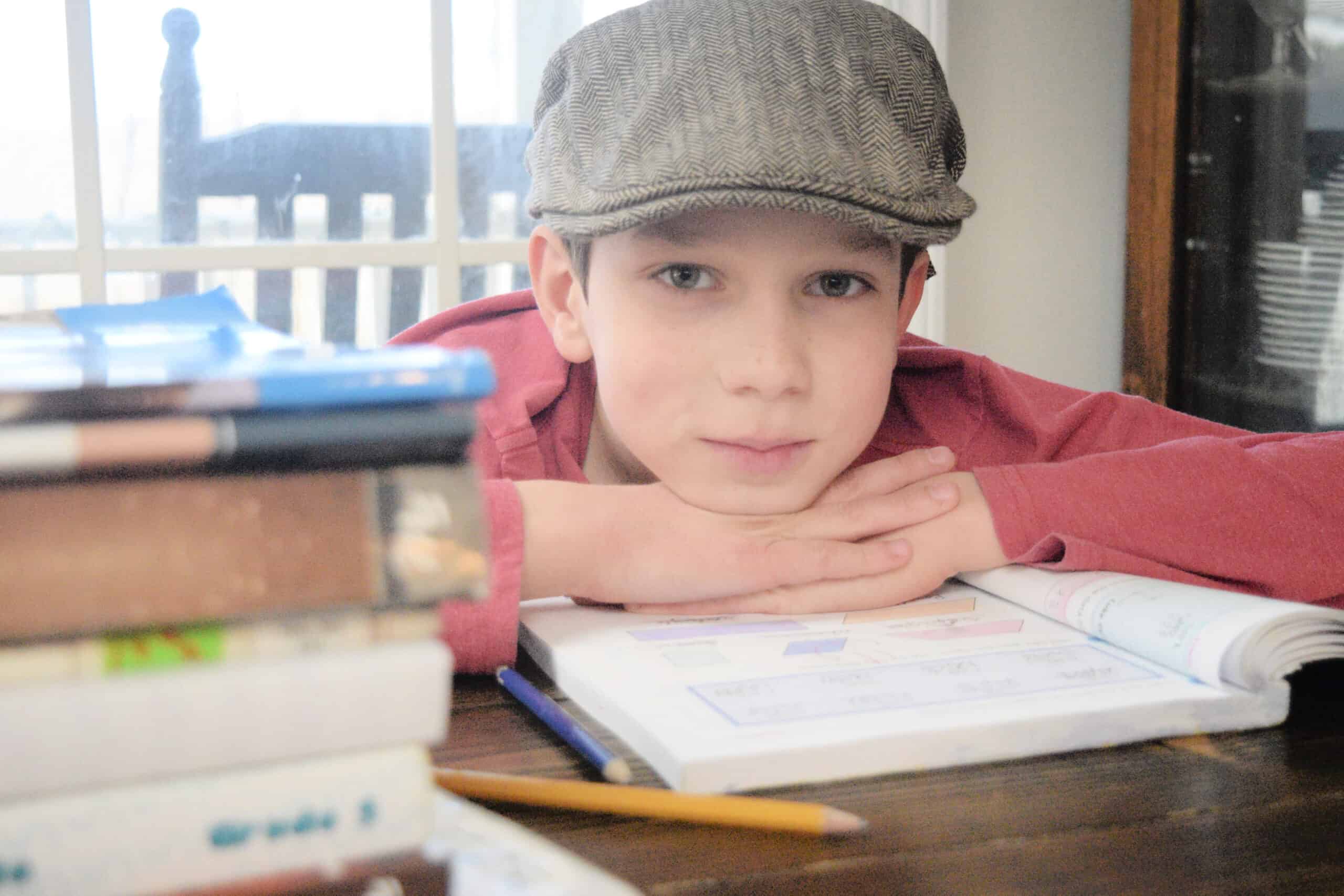
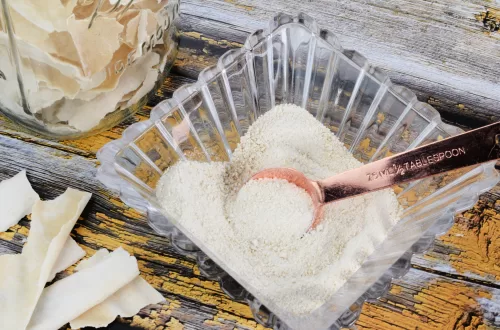
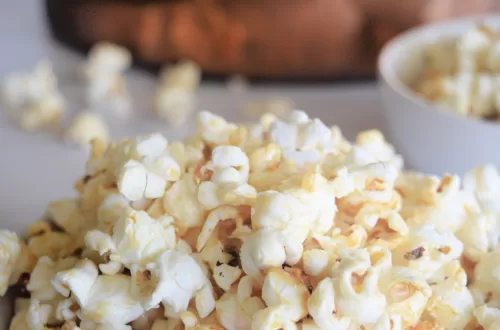
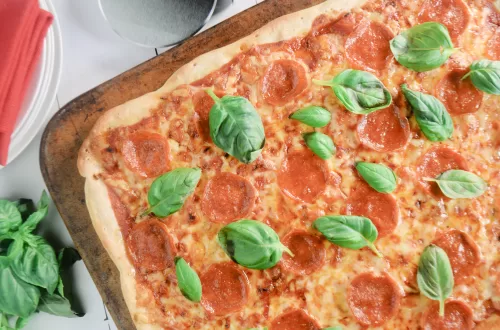
One Comment
Pingback: